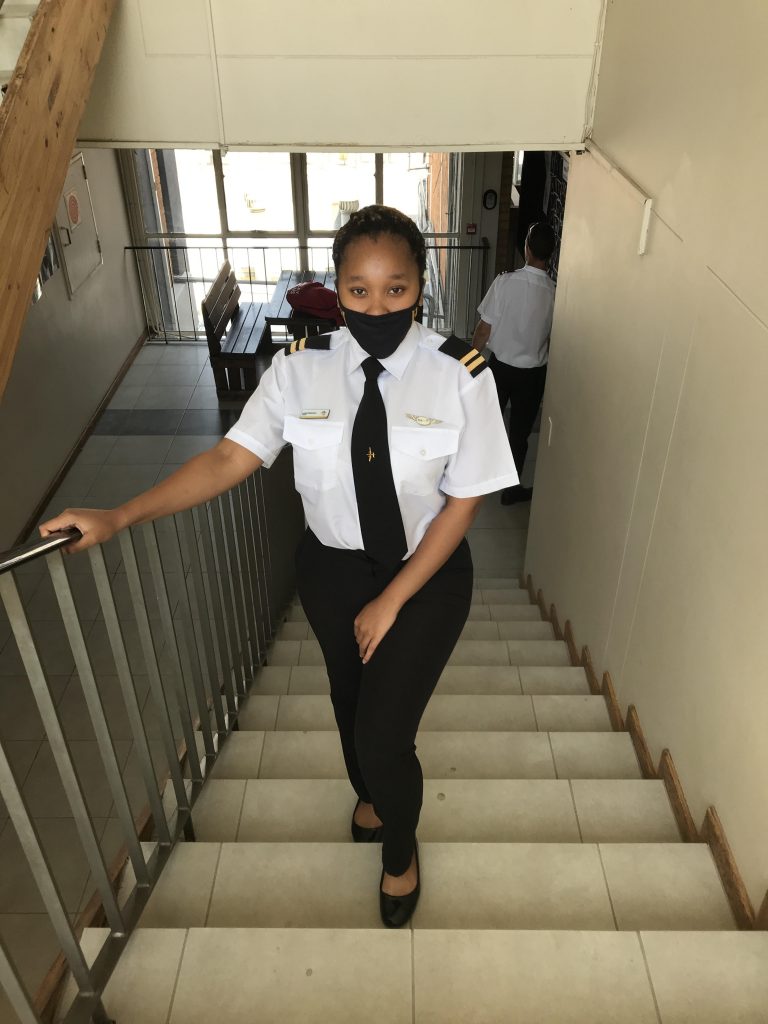The ultimate air career specialising in cargo and passenger air transportation in remote environments including combat zones, humanitarian aid areas and disaster relief sectors. A career that requires extensive physic and mental balance with a scientifically designed development to operate an aircraft. Passionate for flights and aerospace are fundamentals to be in this career. South Africa is one the developing countries with the history of suppression. Piloting was only a dream to many previously disadvantaged citizens. Today, that has changed and many people of colour are taking advantage of the democratic changes in our country. There are more opportunities to explore and the aviation field is opening opportunities.
Oswald Mhlanga from the Hospitality Department at the University of Mpumalanga and J.N. Steyn from the Department of Tourism, Event Management in Cape Peninsula University of Technology’s article on the history of aviation in South Africa traces the history of civil aviation. The article explores the various phases of development which the industry has experienced. It concludes that the aviation industry is indispensable to the development of tourism in South Africa and should therefore be given the proper attention it deserves. The article also dates history from as early as 1929 and makes reference by giving an overview of events that unfolded in the aviation industry in South Africa.

Today we celebrate a number of black people in particular women in this previously known as a male job. Asnath Mahap the first black female South African pilot who made news by flying for the United Nations Red Cross and World Food Programme in Central and West Africa. The list of black female pilots is increasing. We recently read and learned about Boitumelo Katisi, chairperson and a co-founder at Aviation Development Africa. A visionary to chant and motivate for change in the aviation industry. Katisi is an activist with the mission to fight poverty by empowering disadvantaged communities. Her mission started in 2014 when she graduated as a commercial pilot. Featured in a number of publications and nominated for prestigious awards. The younger generation is breaking the barriers and aim to rectify the marginalised phenomenon. More inspiration and motivation to women in sciences is another young and determined black female pilot who just recently obtained her license and is living in the air, Lesego Modungwa. A 22-year-old born in Krugersdorp in the west rand of Gauteng started her journey back in 2012 when she was in grade 8. She drew her inspirations from a TV series “Pan Am” aired about four flight attendants who represent Pan Am airlines, an American broadcasting company production released in 2011. Lesego always wanted to be a flight attendant or a geologist but her dad’s suggestion to attend the flight school open day confirmed her dreams. She obtained her private pilot license in 2020 and now striving towards her commercial license.
There are many aviation schools and careers with endless job opportunities. From medical, law, maintenance and hospitality to name but few. Here is a guideline that will assist you in preparation for the wings.
Guidelines to plan your journey
1. Research Pilot Schools
The first step to become a private or commercial pilot is to research your flight training options. Learn and compare available programs offered by flight schools, and pick the best match for your aviation goals.
2. Take an Introductory Training Flight
Successfully completing an Introductory Training Flight is required before enrolling in a pilot training program. This flight lesson will help you see first-hand the training, aircraft, and quality of instruction a flight school will offer you. It is also a great way to get a better sense of what it’s like to fly from behind the controls.
3. Apply for FAA Medical Certificate
Pilots must meet basic medical requirements to fly. If you want to fly professionally, you must meet higher medical standards than recreational pilots and should apply for a first class medical certificate through an Aeromedical Examiner (AME).
4. Apply for FAA Student Pilot Certificate
Apply for a student pilot certificate through the FAA’s Integrated Airman Certification and Rating Application (IACRA) website (your flight instructor can help with this). While you don’t need a student pilot certificate to start flying lessons, you will need it to fly solo during your training.
5. Start Flight Training Lessons
Start taking flight training lessons and begin working towards obtaining the aeronautical knowledge and pilot training experience requirements needed to become a private pilot.
6. Pass Private Pilot Knowledge Test
During your private pilot flight training, you will need to take and pass the computer-based FAA private pilot knowledge test. To be eligible for the test, you must receive an endorsement from your flight instructor.
7. Pass Private Pilot Practical Exam
The final step in earning your FAA private pilot certificate is to take a practical exam with a Designated Pilot Examiner (DPE). This exam consists of both an oral and a flight portion, and once completed you will be a private pilot.







